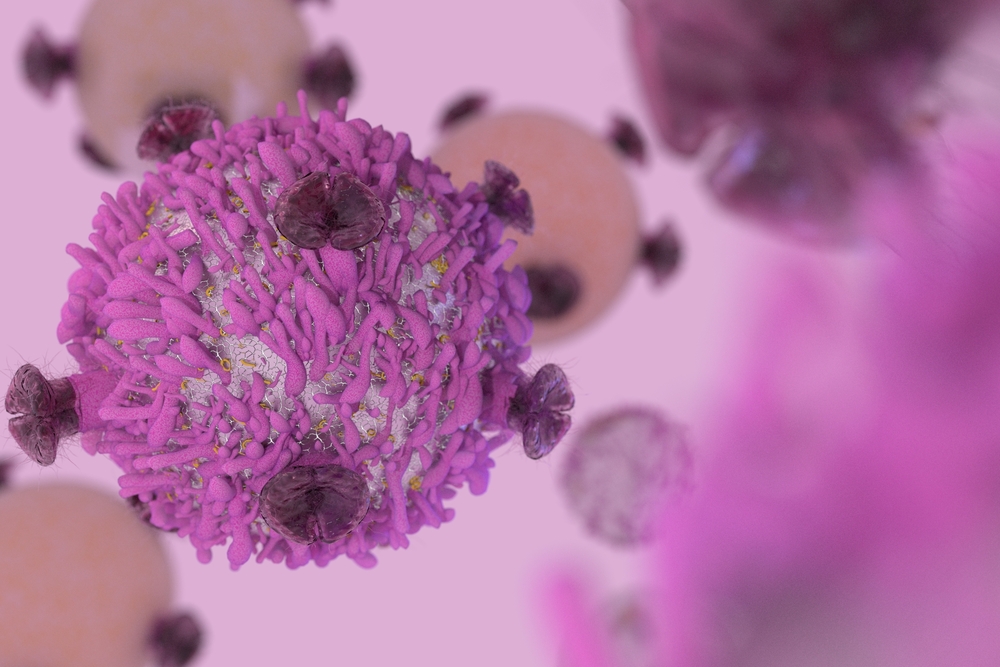
A new study demonstrates that immunotherapeutic agent pembrolizumab (Keytruda) is more effective than chemotherapy as a first-line treatment for most patients with a common type of lung cancer, regardless of patients’ expression of PD-L1, a protein frequently used to predict response to pembrolizumab and other similar therapeutics.
The study— a randomized phase III trial known as KEYNOTE-042— was recently presented at the 2018 American Society of Clinical Oncology (ASCO) Annual Meeting held June 1-5.
In the trial, researchers randomly assigned 1,274 patients with locally advanced or metastatic advanced non-small cell lung cancer (NSCLC) to receive pembrolizumab or chemotherapy. Patients with both squamous and non-squamous cancers were included, but those with cancers that have genetic changes that can be treated with targeted therapies were not included.
The study demonstrated that previously untreated patients with at least 1 percent PD-L1 expression treated with the pembrolizumab lived a median of four to eight months longer than those treated with chemotherapy. In addition, severe side effects occurred in only 18 percent of patients who received pembrolizumab compared to 41 percent of those who received chemotherapy.
At this time, pembrolizumab is only FDA approved as an initial treatment in NSCLC for patients with PD-L1 expression scores of at least 50 percent. It was approved in May 2017 as an initial treatment in combination with chemotherapy for all patients with previously untreated advanced nonsquamous NSCLC, regardless of whether their tumors express PD-L1, but according to the study authors, this study is the largest clinical trial of pembrolizumab as a standalone therapy.
These findings will expand the patient population that can benefit from the immunotherapy, said lead study author Gilberto Lopes, MD, MBA, a medical oncologist at the Sylvester Comprehensive Cancer Center, University of Miami Health System in Florida, in a statement.
“A large number of patients with lung cancer now have a new treatment option with better efficacy and fewer side effects than standard chemotherapy,” said Lopes. Our study shows that pembrolizumab provides more benefit than chemotherapy for two-thirds of all people with the most common type of lung cancer.”
To determine if patients with lower PD-L1 could benefit from treatment with pembrolizumab, researchers separated patients in the study into three groups based on tumor PD-L1 expression.
In the study, 599 patients had PD-L1 expression of at least 50 percent, 818 patients had PD-L1 expression of at least 20 percent, and 1,274 patients had PD-L1 expression of at least one percent. Equal numbers of patients in each PD-L1 expression group received pembrolizumab and chemotherapy.
After a median follow-up of 12.8 months, patients who received pembrolizumab had a longer median overall survival, regardless of PD-L1 expression in the tumor. The benefit of pembrolizumab was greater when the level of PD-L1 expression was higher:
In patients with PD-L1 expression of 50 percent or more, median overall survival was 20 months with pembrolizumab versus 12.2 months with chemotherapy. In patients with a PD-L1 expression of 20 percent or more, median overall survival was 17.7 months with pembrolizumab versus 13 months with chemotherapy, and in patients with PD-L1 expression of 1 percent or more, median overall survival was 16.7 months with pembrolizumab versus 12.1 months with chemotherapy.
“Immunotherapy with pembrolizumab alone benefits a much larger number of patients than we had previously thought,” said ASCO Expert John Heymach, MD, PhD in a statement. “This is yet another promising result with immunotherapy in lung cancer that brings new momentum to the treatment of this notoriously difficult disease.”
These data confirm and could potentially extend the role of pembrolizumab as a standard first-line treatment for PD-L1-expressing advanced/metastatic NSCLC.
This is first study with a primary endpoint of overall survival to demonstrate the superiority of pembrolizumab over chemotherapy in patients with previously untreated advanced/metastatic NSCLC.
Despite these exciting findings, more research is still needed.
Patient groups who benefit from pembrolizumab need to be furthered defined, said study authors. The three broad groupings by PD-L1 expression in the current analysis do not allow researchers to predict the benefit from pembrolizumab for patients with a specific PD-L1 expression level.
Additionally, it is not yet clear whether pembrolizumab combined with chemotherapy is better than pembrolizumab alone in patients who express PD-L1, as there have not been head-to-head comparison trials of the two approaches.




